
Shou Xiaoli, Director-General of the Press Bureau and Spokesperson of the State Council Information Office:
Ladies and gentlemen, good morning! Welcome to the press conference of the State Council Information Office. Today, we have invited Mr. Fu Xuyin, Vice Minister of the Ministry of Transport, to introduce the high-quality development of inland waterway transportation and the relevant information regarding this year's China Maritime Day, and to answer questions of interest. Also present at today's press conference are Mr. Yang Huaxiong, Director-General of the Water Transport Bureau of the Ministry of Transport, Mr. Li Shixin, Executive Vice President of the China Institute of Navigation, and Mr. Chen Ming, Mayor of Qionghai City, Hainan Province.
Now, let's first invite Mr. Fu Xuyin to give an introduction.
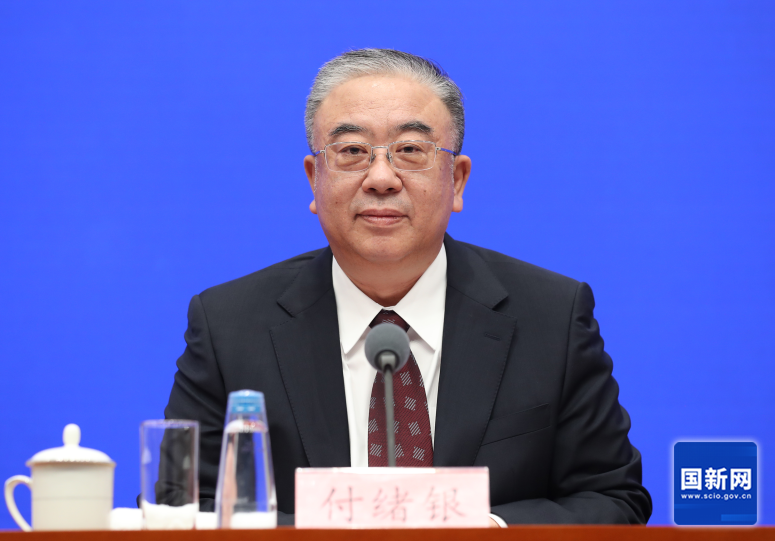
Fu Xuyin, Vice Minister of the Ministry of Transport:
Ladies and gentlemen, friends from the news media, good morning! I'm delighted to meet with you all and express my gratitude for your attention and support towards the work of transportation. Next, I will focus on introducing the high-quality development of inland waterway transportation and the relevant information regarding this year's China Maritime Day activities.
As we all know, inland waterway transportation is a crucial component of the comprehensive transportation system, boasting advantages such as large transport capacity, low costs, and being environmentally friendly and low-carbon. Since the 18th National Congress of the Communist Party of China, the Ministry of Transport has thoroughly implemented the important instructions of President Xi Jinping, achieving remarkable results in promoting the high-quality development of inland waterway transportation.
Firstly, the waterway network system has been continuously improved, and the capacity of ports has kept rising. We have accelerated the construction of national high-grade waterways. By 2024, the mileage of Class III and above waterways in China had reached 16,000 kilometers, a 62% increase from 2012. The capacity of major arteries such as the Yangtze River, the Xijiang River, and the Beijing-Hangzhou Grand Canal has been continuously enhanced. The Jianghan Canal and the Jianghuai Canal have been opened to navigation, and a large number of major projects, including the Pinglu Canal, are being advanced at an accelerated pace. The capacity of ports has been continuously upgraded, with an average annual increase of over 10 berths with a capacity of over 10,000 tons in inland rivers since 2012. In 2024, the number of inland river ports with an annual throughput of over 100 million tons had reached 23, 2.3 times that of 2012. With the improved capacity of inland river ports and waterways, the inland river freight volume reached 4.95 billion tons in 2024, 2.2 times that of 2012, and the freight turnover reached 2.2 trillion ton-kilometers, 2.9 times that of 2012.
Secondly, the level of ship equipment has been significantly improved, and the efficiency of transportation services has continued to rise. We have successively implemented two rounds of policies for the scrapping and renewal of old vessels, with the average tonnage per cargo ship increasing from less than 700 tons in 2012 to the current 1,790 tons, and the average tonnage of inland cargo ships on the Yangtze River mainline reaching 2,207 tons. With the support of the national policies on upgrading old equipment and fostering new growth drivers, 2,500 old vessels were dismantled last year, and a number of large-scale, standardized, specialized, and clean vessels were newly built. Transportation organization has also been continuously optimized, with the river-sea combined transport volume on the Yangtze River mainline reaching 1.56 billion tons in 2024, accounting for approximately 40% of the total transport volume on the Yangtze River mainline. Innovations in transportation service models are also underway. For instance, containers in the Yangtze River Delta can now be transported directly via river-sea routes to Yangshan Port for export, bypassing intermediate stops across the three provinces and one municipality in the region. This has reduced the average transportation time by two days and lowered the logistics cost per container by approximately 800 yuan.
Thirdly, the pace of green, low-carbon, and intelligent transformation has accelerated, with a noticeable enhancement in the momentum for innovative development. New energy and clean energy vessels have experienced rapid growth, evolving from non-existent to widespread and achieving large-scale application. Currently, there are over 1,000 new energy inland vessels in total. The use of shore power by vessels berthing along the Yangtze River Economic Belt has now become a regular practice. In 2024, the electricity consumption reached 190 million kilowatt-hours, four times the peak consumption during the 13th Five-Year Plan period, resulting in a reduction of 133,000 tons of carbon dioxide emissions, thereby strongly supporting the protection of the Yangtze River. The construction of smart waterways has also yielded remarkable results, with electronic navigational charts achieving full coverage along the more than 2,800-kilometer Yangtze River mainline. The development of smart ports is accelerating, with a number of automated terminals and intelligent yard projects in inland rivers having been completed and put into operation.
Inland waterway transport serves as a critical east-west and north-south corridor, playing a vital role in strengthening the domestic circulation and supporting the dual-circulation paradigm that links domestic and international markets. The Ministry of Transport, resolutely implementing the decisions and plans of the CPC Central Committee and the State Council and guided by the goal of accelerating the construction of a country with strong transportation network, is advancing high-quality development of inland shipping and establishing a “1+1+N” policy framework for high-quality inland waterway development in the new era.
The first “1” refers to the Action Plan for Advancing the Interconnection Project of the Inland Waterway Transport System issued and printed in March this year with the State Council’s approval by the Ministry of Transport together with the National Development and Reform Commission. The second “1” is the Opinions on Promoting High-Quality Development of Inland Shipping, released in June this year jointly by the Ministry of Transport and five other ministries—the Ministry of Industry and Information Technology, the Ministry of Finance, the Ministry of Natural Resources, the Ministry of Ecology and Environment, and the Ministry of Water Resources. The “N” denotes a succession of special initiatives, beginning with the Yangtze River Delta Pilot Zone for High-Quality Inland Shipping Development—the first of several forthcoming measures. Together with the three provinces and one municipality of the Delta, we will launch this pilot zone, followed by additional “N” initiatives focused on intelligent inland shipping, green development, and smart transformation. This entire policy suite is framed as “N” special actions that advance, in a coordinated manner, the “hard connectivity” of inland-waterway infrastructure and the “soft upgrading” of transport services. With these efforts, we can comprehensively promote full-chain, high-quality development across all factors of inland shipping.
The above provides an overview of the fundamentals concerning the high-quality development of inland waterway transport. Next, I would like to brief you on this year’s China Maritime Day.
2025 marks the 20th anniversary of China Maritime Day and the 620th anniversary of Zheng He’s voyages to the Western Seas. Under the theme “Green Shipping, Charting New Frontiers,” activities including a series of forums on maritime day will be held in Qionghai, Hainan. On 11 July, we will release the 2025 China Maritime Day Proclamation, issue a commemorative stamped envelope, direct all ships to dress full and sound their whistles in unison for one minute, and stage popular-science and public commemorative activities. These arrangements give the event richer substance and distinctive features. Here, I also invite friends from the media to take an active part in and report on this year’s Maritime Day, supporting the development of China’s shipping industry.
That concludes my brief introduction, thank you all.
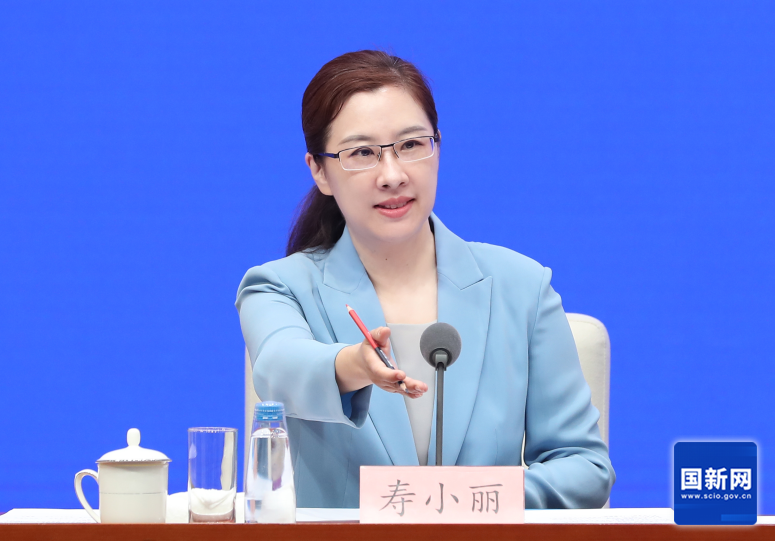
Shou Xiaoli:
Thank you, Vice-Minister Fu Xuyin, for your briefing. We will now move to the Q&A. Before asking questions, please identify your news organization.
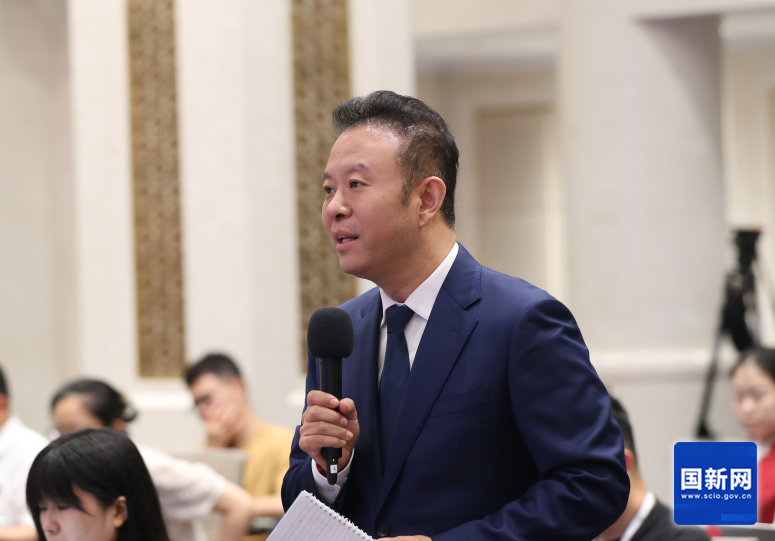
China Media Group:
Spokesperson, as you just noted, the Ministry of Transport and relevant departments have issued both the Action Plan for Advancing the Interconnection Project of the Inland Waterway Transport System and the Opinions on Promoting High-Quality Development of Inland Shipping. Could you explain why these two documents were introduced, and what guiding role they will play in the future development of inland waterway transport? Thank you.
Fu Xuyin:
Thank you for your question, and I will continue to give the answer. The CPC Central Committee and the State Council attach great importance to the development of inland shipping. In 2011, the State Council issued the “Opinions on Accelerating the Development of Inland Waterways including the Yangtze River”, which set clear development goals by 2020 and set out a series of key tasks including keeping high-grade waterways open, building an integrated inland waterway transport system, ensuring safe inland waterway operations, and achieving green development. Supporting measures were also unveiled. Over the past decade, the document has played an important role in advancing the development of inland shipping including the Yangtze River, especially in improving the modern integrated transport system and addressing weak links.
China is now at a critical juncture of fostering a new development pattern and pursuing high-quality development. Strengthening the domestic circulation and effectively reducing the logistics costs for society as a whole have become major national strategic choices, presenting both new opportunities and challenges for inland shipping. At present, inland waterways still have weak links and shortcomings. In recent years, we have markedly increased investment in inland transport and attached greater importance to its development, seeking to leverage the comparative advantages of inland shipping. Yet, by comparison, deficiencies sill remain: certain waterways—such as the Beijing-Hangzhou Grand Canal, the Yangtze River and the Xijiang River—still suffer from bottlenecks and chokepoints; the ports’ hinterland service capacity is insufficient; and the level of transport organization remains low. Compared with highways, railways and aviation, inland shipping is still under-developed. Its comparative advantages within the comprehensive transport system have not been fully unleashed, leaving a number of chances for further growth.
The first document I just mentioned, the Action Plan for Advancing the Interconnection Project of the Inland Waterway Transport System, focuses on “hard connectivity” in infrastructure. Its primary goal is to eliminate bottlenecks and chokepoints in inland shipping so as to cut logistics costs, raise efficiency, and improve service quality. The plan sets out 17 priority tasks across four areas: optimizing the main trunk-line corridors, fully opening up the high-grade waterway network, and consolidating and upgrading the capacity of port hubs. By 2030, we aim to have in place a modern, interconnected inland waterway system that covers from the east to the west, the south to north, links land and sea in both directions, and is open to domestic and international traffic as well.
The second document I introduced—jointly issued by six ministries—is the Opinions on Promoting High-Quality Development of Inland Shipping. It serves the nation’s major strategies, especially the coordinated regional development strategy, and seizes the current strategic opportunities for inland shipping. Centering on high-quality development, the document set the goal of building a modern inland waterway system that is smooth and efficient, green and smart, safe and resilient, and strongly supportive. It also sets out 23 priority tasks across seven areas to upgrade equipment, raise transport service standards, accelerate the green, low-carbon and smart transformation of inland waterways, deepen economic and industrial integration, and step up support for regional economies and industrial parks, with special emphasis on eliminating the “last-mile” bottlenecks. Building on this, we will accelerate the digitalization of waterways, the hub-oriented development of ports, the standardization of vessels, the systematization of transport organization, the greening of operations and the smartization of services.. By 2030, we aim to raise the average deadweight tonnage of motorized cargo ships on national inland waterways to about 1,900 tonnes, extend electronic navigational charts to 85 % of high-grade waterways, achieve 100 % rail access at major ports along the Yangtze River mainline, and further increase both the freight volume and turnover share of inland waterways within the integrated transport system—thereby fully unleashing the comparative advantages of inland shipping.
Inland waterway transportation development involves infrastructure, equipment manufacturing, as well as transport organization, industrial integration, comprehensive water resource utilization, and other multifaceted aspects. Relevant departments will strengthen coordination and synergy, intensify efforts to promote the integration of water networks and shipping networks, enhance factor support such as land resources, environmental protection, and funding, systematically advance the coordinated development of key elements including waterways, ports, and vessels, and forge a powerful synergy to comprehensively drive the implementation of all tasks for the high-quality development of inland waterway transportation. Thank you!
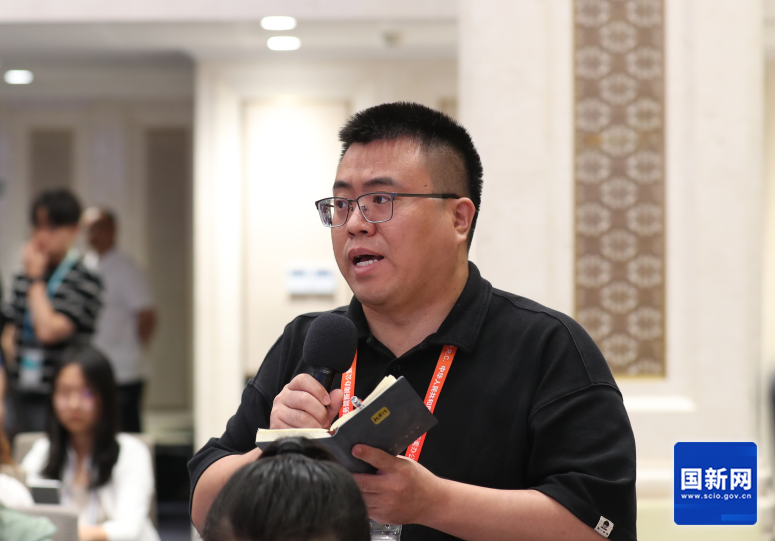
Reporter from New Yellow River Client:
2025 marks the 20th anniversary of China Maritime Day. Could you share the highlights of this year’s event arrangements and how they reflect the theme “Green Navigation, Striving for New Strengths”? Thank you.
Fu Xuyin:
Thank you for your question. I’ll invite Mr. Li Shixin, Executive Vice Chairman of the China Institute of Navigation, to address this. The institute has played a major role in preparing the Maritime Day activities and is responsible for their specific organization.
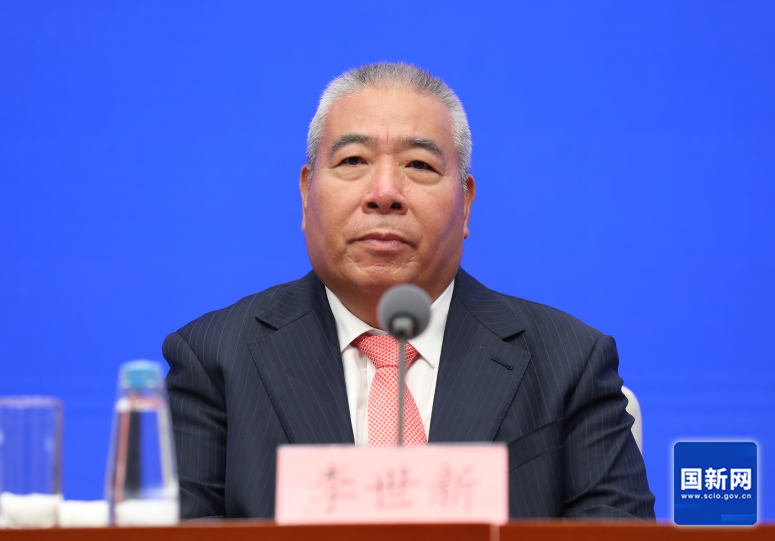
Li Shixin, Executive Vice Chairman of the China Institute of Navigation:
Thank you for your question. I also extend my gratitude to all media friends for your longstanding support to the China Institute of Navigation. Over the past 20 years, China Maritime Day has become a vital platform for the global maritime community to exchange ideas, share technologies, and build consensus on development. It has played an active role in promoting maritime knowledge, enhancing ocean awareness, and serving the development of a strong transportation sector, maritime power, and shipping nation.
In 2025, the main events of China Maritime Day will be held in Boao, Qionghai City, Hainan Province, from July 10 to 12—spanning three days. The main events include over 20 activities such as forums, seminars, exchange sessions, and maritime science and culture programs. This year's theme is “Green Navigation, Striving for New Strengths,” with the following key features and highlights:
First, the event emphasizes green development. During the authoritative release session of the main forum, we will jointly issue an initiative to “Lead the New Trend of Green, Low-Carbon, and Smart Development in Shipping.” Presentations will cover both policy aspects—such as pathways and strategies for China’s green shipping transition—and practical dimensions like developing renewable energy for green port construction. Against the backdrop of rapid growth in new-energy vessels, Chinese and international experts will delve into topics including smart and green ships, safety of green fuels, and emission reduction targets.
Second, the focus shifts to advancing new quality productive forces in shipping. Technological innovation stands at the core of developing these forces. By driving green transformation, digital upgrading, and intelligent development in shipping, technological innovation will break free from traditional growth models, phase out outdated high-energy-consumption and high-pollution equipment, catalyze new shipping models and momentum, and enhance the industry’s value. The China Institute of Navigation will co-host the “Symposium on New Quality Productive Forces in Shipping” with the Veteran Transportation Think Tank to explore pathways for technological innovation to propel these forces forward.
Third, the event highlights Hainan's distinctive features. As this year marks the official launch of the Hainan Free Trade Port, special keynote speeches have been arranged across various forums—including the main forum, the Port and Shipping Enterprise Development Forum, and the Symposium on New Quality Productive Forces in Shipping—to showcase the achievements, development policies, and business environment of the Hainan Free Trade Port, amplifying its influence.
On July 10, we will launch the National Maritime Science Popularization Season at the China (Hainan) Museum of the South China Sea, featuring a public lecture titled "Craftsmen Narrate Navigation" by the Science Ambassadors of China Institute of Navigation, along with the opening ceremony of a Maritime Science Summer Camp.
With the guidance of the Maritime Day Event Organizing Committee and the strong support of all member units and organizers, this year's activities promise to be even more vibrant. We warmly welcome all media friends to participate in and cover this year's Maritime Day events. Thank you!
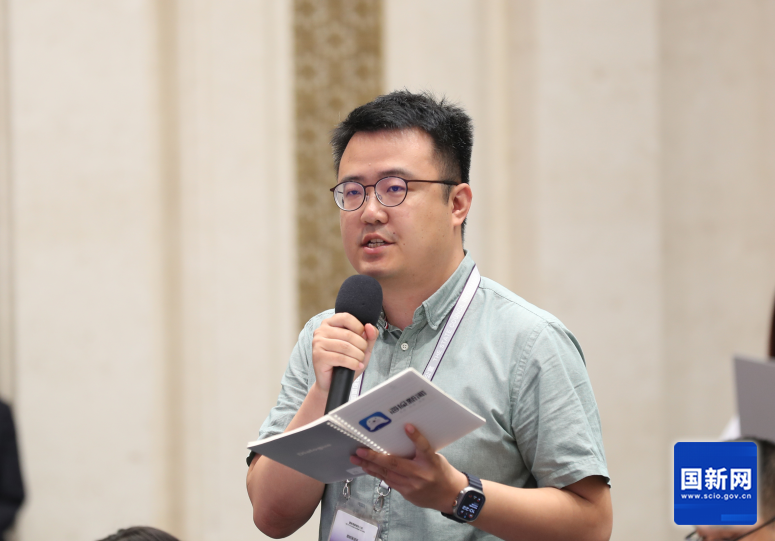
Poster News Reporter:
Earlier, the Ministry of Transport proposed building a number of world-class smart ports and smart waterways. Could you share the progress made so far and the next steps in this initiative? Thank you.
Fu Xuyin:
Thank you for your question. I'll invite Mr. Yang Huaxiong, Director of the Water Transport Bureau of the Ministry of Transport, to provide details.
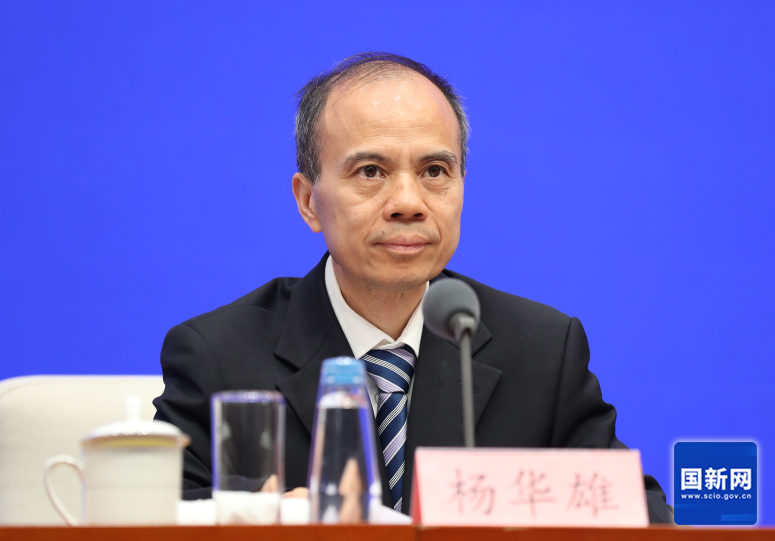
Yang Huaxiong, Director of the Water Transport Bureau, Ministry of Transport:
Thank you, Deputy Minister Fu, and thank you for the question. This is an excellent topic. Just yesterday, I saw news reports that AI-related majors have become the most popular choice in this year’s college applications, reflecting the high interest in smart ports and smart waterways within the water transport sector—a priority for our ministry as well. The 20th CPC National Congress and the Third Plenary Session of the 20th CPC Central Committee outlined strategic plans to accelerate the development of new quality productive forces. Seizing opportunities from the latest technological and industrial revolutions, we are driving the digital and intelligent transformation of the water transport sector. In 2023, the Ministry of Transport issued the Guidelines on Accelerating the Construction of Smart Ports and Smart Waterways, and thanks to industry-wide efforts, significant progress has been made.
In port automation, the construction and upgrading of automated and intelligent facilities are advancing rapidly. To date, China has built 23 automated container terminals and 29 automated dry bulk terminals. Innovations like 5G-powered unmanned container trucks, automated remote-controlled rail cranes in yards, and smart gates are now widely adopted. Our automated terminals lead the world in scale, operational efficiency, and technological sophistication. Some ports have also developed integrated logistics platforms combining customs, port, and trade services, significantly enhancing smart service capabilities.
Significant progress has been made in developing smart waterways. The coverage of national electronic navigation charts exceeds 9,950 kilometers, with the Yangtze River trunk line electronic navigation charts interconnected with those of the northern Jiangsu section of the Beijing-Hangzhou Grand Canal, the Ganjiang River, the Hanjiang River, and the Yangtze Estuary electronic sea charts. Regions such as Jiangsu Province and Zhejiang Province have implemented systems for vessel lock transit, enabling “single declaration, one-click passage, unified scheduling, and centralized monitoring.” A batch of full-featured smart waterway projects, including the Yangtze River Wuhan Innovation Demonstration Zone and the Southern Jiangsu Canal, are accelerating construction. Initial breakthroughs have been realized in areas like “integrated river-sea electronic navigation,” “one-click lockage,” and “comprehensive intelligent management.”
In the next phase, the Ministry of Transport will continue to prioritize the digital transformation of water transport infrastructure, promoting intelligent coordination among vessels, ports, and waterways to comprehensively enhance water transport efficiency and development capacity. Specific measures include: Developing evaluation standards for smart ports and smart waterways to provide standardized institutional support. Promoting the application of intelligent sensing equipment and digital twin technologies in high-grade waterways and major ports to advance intelligent production management and operational monitoring. Innovating port data services, leveraging block chain technology to drive digitalization of shipping trade, facilitating cross-regional coordinated ship lock scheduling, and achieving intelligent operational services.
In the future, ports will not only feature automated terminals but also provide full-chain intelligent services. Vessels, supported by “an integrated electronic navigation chart,” “a unified operational monitoring network,” and “centralized lock scheduling”, will achieve true intelligent navigation, seamless ship-shore coordination, and unimpeded passage. Thank you!
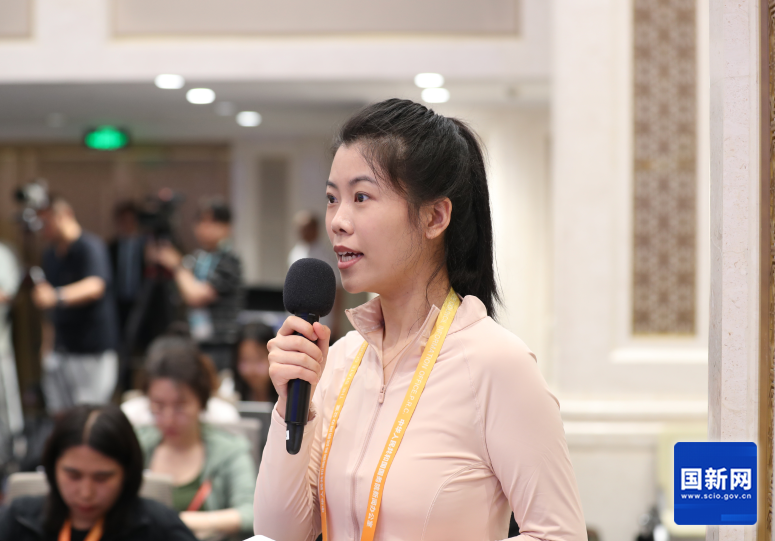
Daily Economic News Reporter:
With the increase of inland waterway freight volume, the advantages of inland shipping--large capacity and low cost--are becoming increasingly prominent. Regarding promoting the high-quality development of inland shipping, what innovative measures are being taken to effectively reduce overall logistics costs for society? Thank you.
Fu Xuyin:
Thank you for your question. This aligns closely with our current efforts to implement the decisions and plans of the CPC Central Committee and the State Council, particularly in reducing costs, improving quality and efficiency, and lowering comprehensive transportation costs. We have noted and are actively implementing measures in this regard. Last year, the Fourth Meeting of the Central Finance Affair Committee emphasized the need to effectively reduce overall societal logistics costs, enhance economic operational efficiency, optimize transportation structures, strengthen the shift from road to rail (PTR) and road to water (PTW), and encourage the development of new logistics models integrated with platform economies. We have been conducting in-depth research, particularly on PTR and PTW initiatives. Guided by the meeting’s directives, we are focusing on leveraging the large-capacity and low-cost advantages of inland shipping to improve transportation efficiency.
As previously mentioned, the Opinions propose measures such as enhancing organizational efficiency, improving last-mile waterway connectivity, and promoting fleet development—all aimed at reducing costs, improving quality and efficiency, and optimizing the transportation structures.
For instance, in enhancing transportation organizational efficiency, the Opinions propose the orderly development of platform economies in inland water transport. As we know, platform economies excel in matching cargo and vessels. Establishing inland water transport network freight platforms with logistics tracking and transportation organization capabilities can reduce vessel idle time and waiting periods, optimize spatial coordination, and improve transportation efficiency and vessel profitability, thereby lowering costs. While such platforms are common in road freight, they are emerging in water transport sector. Therefore, the Opinions encourage port and shipping enterprises to develop online water freight platform services and call for research into regulatory frameworks suited to these new models, fostering the healthy, scaled development of the platform economy under proper management.
Recognizing water transport’s limitation compared to road in offering “door-to-door” service, the Opinions proposes constructing short feeder channels connecting ports directly to industrial parks. In recent years, to address issues such as insufficient connectivity between inland waterways and key industrial zones, the Yangtze River Delta region (Jiangsu, Zhejiang, Anhui province and Shanghai city) has piloted the construction of short, cost-effective channels with rapid implementation timelines. These channels solve the “last mile” problem, reducing transshipment and intermediate handling. As each transshipment adds cost, extending waterways directly to enterprise and park gates offers significant savings. Currently, 15 such short feeder channels are completed or under construction. The Opinions formalize this successful approach, advocating for stronger links between inland shipping and key port-proximate industries/logistics, promoting “port-to-park” short feeder channels where feasible. These small-scale projects with targeted solutions address persistent challenges, better serve the real economy and public, and advance logistics cost reduction, quality improvement, as well as efficiency gains.
Additionally, the Opinions propose developing fleet transport tailored to local conditions. Unlike the prevalent single-motorized vessel model, fleet transport combines powered motor vessels with unpowered barges. This mode offers advantages including large capacity, reduced crew requirements, lower costs, and lower energy consumption. For instance, one motor vessel can push 3-4 barges (each about 1,000-2,000 tons), significantly increasing total capacity. This was a primary mode, even dominant, in inland water transport during the mid-to-late 20th century. After the market liberalization in the 1980s, numerous operators, including individual vessel owners, entered the market. Fleet transport gradually declined and largely disappeared, giving way to the more flexible and operationally efficient single-vessel model, which became the mainstream in subsequent decades.
As modern information technology advances, its application in inland waterway transportation and the shipping sector has become increasingly widespread. Technologies like electronic navigational charts, port information systems, and automated terminal systems are being more extensively adopted. At the same time, the standardization of waterways is becoming more common. For instance, the Yangtze River has fundamentally achieved sectionalized and standardized management, creating more favorable conditions for fleet transportation. Fleet transportation is closely linked to waterway conditions. The standardization of waterways significantly enhances fleet efficiency, presenting new opportunities and instilling vigor and vitality into fleet transportation.
Fleet transportation features high capacity, low energy consumption, and low cost. Many major rivers abroad still retain this mode of transportation, especially for bulk cargo; in some regions, it is even the primary mode of transport. Our “Opinions” propose promoting the development of fleet transportation based on local navigation conditions and cargo availability, encouraging the cultivation of fleet-operating entities in water-rich regions such as the Yangtze River Delta. This initiative, as an exploration in cost reduction, quality enhancement and efficiency improvement, gives the standardization of waterways and ships into full play, improving both transportation capacity and efficiency. More importantly, it further reduces logistics costs in inland waterway transportation. In alignment with the requirements set forth in the “Opinions”, we are also exploring these specific measures to further reduce costs, improve quality, and increase efficiency in inland waterway transportation. Thank you!

Reporter from Henan Broadcasting System, Elephant News:
In recent years, transport-tourism integration has emerged as a new trend for the sector, and inland-river cruising is becoming a new highlight across regions. Could you brief us on the current status of passenger tourism on inland waterways and your next steps in this sector? Thank you.
Fu Xuyin:
Thank you for the question. The Ministry of Transport has been actively exploring this initiative. In coordination with the Ministry of Culture and Tourism, we’ve recently conducted joint studies and explored some experience and practices. Now, I’ll invite Mr. Yang Huaxiong, Director General of the Water Transport Bureau, to respond.
Yang Huaxiong:
Thank you for your question. This is indeed topic of common concern. As is noted by Vice Minister Fu Xuyin, the Ministry of Transport places high importance on transport-tourism integration, and this applies to waterways as well. China’s large rivers as well as lakes have long served as economic and cultural arteries, supporting waterborne transport, ecological conservation and cultural heritage. Particularly, the growing popularity of cultural tourism and museum visits in recent years has brought inland waterway tourism new opportunities. Through overall planning, we have therefore launched a three-year programme to cultivate high-quality tourist-cruise routes. So far we have created 36 new “Golden Waterway Tourism Routes” that traverse 23 provinces and cities, covering city skylines, natural scenery, cultural heritage and coastal views. The “Two Dams & One Gorge” route on the Yangtze River now draws more than two million Chinese and foreign visitors every year and has become a world-class brand in inland waterway tourism. This tourist-oriented transformation of inland passenger shipping has become a new engine for boosting consumption and domestic demand.
In the next step, we will focus on three initiatives under the newly released “Guidelines on Promoting High-Quality Development of Inland Waterway Transport”:
First, a “dual upgrade” of hardware and services. We will accelerate the upgrading of tourism waterways, passenger terminals and waiting facilities while comprehensively enhancing port service standards and quality across the board, making travel more convenient and comfortable.
Second, “deep exploration” in culture-tourism integration. Capitalizing on hot spots of culture-tourism consumption, we will strengthen the conservation of cultural resources along major waterways like the Yangtze River and the Pearl River, as well as ancient canals and historic ports. By highlighting features like natural landscapes, historical culture, revolutionary heritage and rural revitalization, we aim to cultivate more premium water tourism brands like Zhejiang's “Boating in Zhejiang” and Jiangsu’s “Yangzhou Boat Tour”.
Third, “safeguarding the bottom line” in safety. We will increase investment in passenger vessel safety, promote the application of Beidou navigation, assisted driving systems and smart video monitoring in waterway tourist transportation, as well as strengthen the full-journey safety supervision during operations. Additionally, tailored measures — “one route, one policy” and “one watershed, one policy” — will be implemented for specific routes and key water areas, ensuring travelers enjoy both delightful and worry-free journeys.
Thank you!
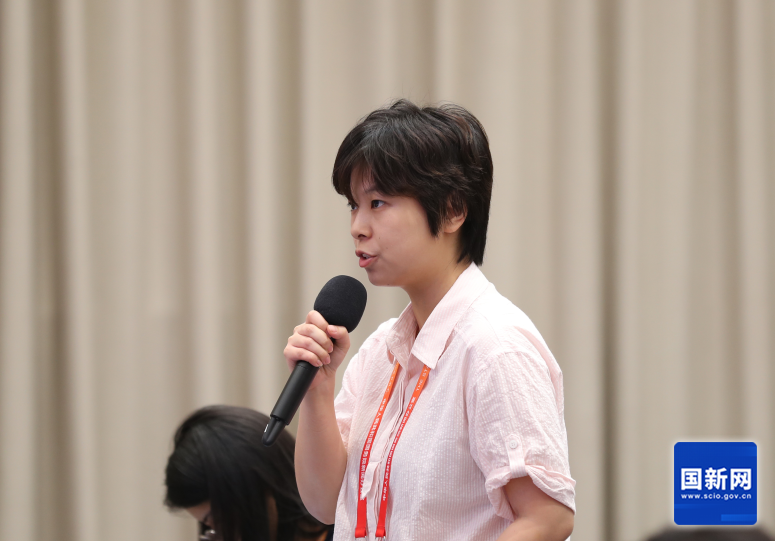
Jiupai News Reporter:
As the host city for China Maritime Week 2025, could you please tell us what preparations Qionghai City has made so far? What locally distinctive and innovative activities will be organized? Thank you.
Fu Xuyin:
Let’s invite Mr. Chen Ming, Mayor of Qionghai city, Hainan province, to brief everyone on this matter.
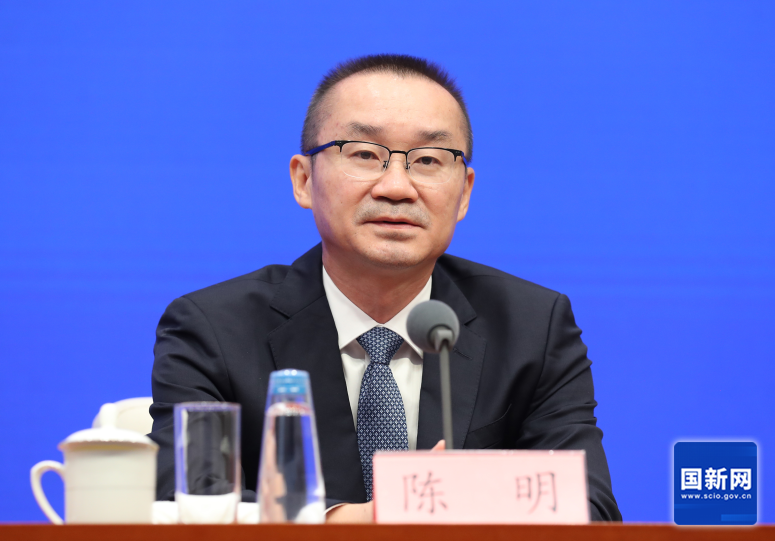
Chen Ming, Mayor of Qionghai city, Hainan province:
Thank you to the journalist for your question, and thank you all for your concern and support for Qionghai's work.
Maritime Day of China is the only marine-related national holiday officially approved by the State Council. Qionghai city is deeply honored to host China Maritime Week 2025. Since being entrusted with this significant mission, we have prioritized meticulous preparations, advancing early planning, deployment and implementation with rigorous pragmatism and excellence to the successful hosting of the China Maritime Week 2025 under the strong leadership of the Hainan Provincial Party Committee and Provincial Government. Our preparatory work focuses on four key aspects:
First, we have established simplified and efficient organizational structures. To ensure the successful hosting of 2025 China Maritime Day activity, the Qionghai Municipal Government has formed a preparatory committee led by myself as the chairperson, with 32 member units, 7 deputy mayors serving as deputy heads. We also set up 9 working groups, namely General Coordination Group, Security Group, Emergency Support Group, Food Safety Group, Medical and Healthcare Group, Community Sanitation Group, Media Promotion Group, Investment Activities Group, and The Public Engagement Group. These groups are responsible for organizing and coordinating the preparatory work. So far, we have sorted out plans for guest reception and services support, and we have finalized volunteer recruitment and training.
Second, we have planned cultural activities full of variety. During China Maritime Week 2025, we will launch various public cultural activities, including the Hainan Provincial Calligraphy and Painting Competition for Primary and Secondary School Students, the Children's Creative Art Show, the Maritime Knowledge Contest, Science Popularization and Study Tour, the National Intangible Cultiral Heritage Study Program on the "Nanhai Hangdao Geng Lu Jing (Oral Accounts of Sea Routes in the South China Sea", a Fireworks and Music Show, and the 'Xin Hong Zhuan' Vessel Exhibition Tour: Navigating the New Era. These activities can not only provide an immersive experience for visitors and citizens, but also help raise the maritime awareness and navigation quality of the people, fostering a strong interest in the maritime industry.
Moreover, we will launch promotion and exchange activities with distinctive theme. We will seize the precious opportunity of hosting the China Maritime Day Main Event in Qionghai. We will engage with attendees and build a platform for communication and cooperation. Centered on the theme "Seafarer Medical & Wellness Tourism and Maritime Exhibition Cluster", we have planned a "1 + 2 + N" activity, which means holding one thematic promotion session, creating two tour routes, and staging multiple publicity sessions, in order to show the latest socio-economic achievements and unique appeal of this city on all fronts. On that day, we warmly invite you all to actively participate in and work with us to seek new opportunities in the investment and development of the Hainan Free Trade Port .
Finally, we will foster a vibrant and engaging atmosphere for promotion. Centered on the theme of this event, we have launched pre-event publicity campaigns, creating prominent atmosphere at airports, highways, high-speed rail stations, major roads near the main venue, popular tourist attractions, and hotels. We aim to leverage China Maritime Week as a national platform and China Maritime Forum as an international exchange platform to further spread Qionghai's developmental achievements. Our goal is to help more domestic and international friends discover, explore, and fall in love with Qionghai.
Currently, preparations have entered the final sprint. We will further strengthen communication and coordination with co-organizers, enhance operational planning, and ensure all arrangements meet the highest standards and quality, aiming to make the 2025 China Maritime Day Main Event a successful, vibrant, spectacular, and cost-effective maritime celebration. On this occasion, we warmly invite friends from all walks of life, including the media present here today, to visit Qionghai for tourism, inspections, and investment. We hope you can experience firsthand the dynamic energy and open vitality of this coastal city. Thank you!
Shou Xiaoli:
Two more reporters still have their hands up. We will take the last two questions.
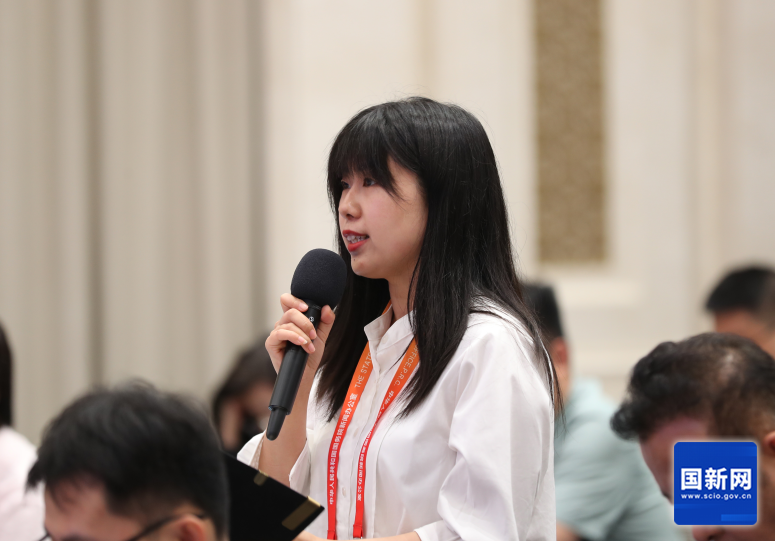
Dazhong Daily Repoter:
Maritime shipping serves as the backbone of international trade, playing a vital role in cargo transportation. What is the Ministry of Transport's vision for the future development of China's maritime shipping industry? Thank you.
Fu Xuyin:
I invite Mr. Yang Huaxiong to respond.
Yang Huaxiong:
Thank you for your question. Maritime shipping and inland waterway transport are interconnected and mutually reinforcing. The development of inland waterway transport also relies on the growth of maritime shipping.
Maritime shipping is the "meridian" of foreign trade. As the world's largest trading nation, strengthening maritime shipping is of great significance to building a strong maritime and shipping nation and turning China into a trader of quality. Facing profound changes unseen in a century, China's shipping sector must overcome external risks and challenges, giving full play to its strengths and make up for its deficiencies, and accelerate high-quality development.
First, upgrading to build a world-class shipping fleet. We will optimize fleet size and structure while enhancing vessel equipment technologies. Based on China's position as the world's largest ship-owning nation, we will further develop a safer, more reliable and structurally optimized world-leading ocean-going fleet. By making full use of national policies supporting "new infrastructure and new urbanization initiatives", we will create new energy-powered vessels to upgrade our coastal fleet capacity and revitalize the north-south maritime transport corridor.
Second, enhancing functionality to build first-class port hubs. We will strengthen ports' role as comprehensive transportation hubs, improve port collection and distribution systems, develop multimodal transport, upgrade logistics infrastructure, and optimize shipping route layouts. We will coordinate the integrated development of world-class port clusters and build globally leading strong ports. Additionally, we will deepen collaboration between port operators and shipping companies, cargo owners, financial institutions, and shipbuilders, facilitating the transformation of major port enterprises into international integrated logistics operators.
Third, improving quality and efficiency to deliver world-class maritime services. We will accelerate efforts to address shortcomings in high-end shipping services and vigorously develop modern shipping services such as shipping finance, insurance, and arbitration. We will support Shanghai in expediting its development as a globally leading international shipping center, while advancing the construction of regional international shipping hubs in Tianjin, Dalian, and Xiamen.
Fourth, Promoting transformation and advance green and smart development. We will advance structural emission reduction and decarbonization in the maritime industry, accelerate the promotion and application of new energy sources, enhance pollution prevention in ports and vessels, and establish a clean and low-carbon energy system for maritime transport. We will encourage Chinese ports to jointly establish international green shipping corridors with more foreign ports, advancing the global green and low-carbon transition in shipping. Concurrently, we will promote deep integration of AI, big data, blockchain and other technologies with the shipping sector to improve data connectivity, reduce costs, and enhance service quality and efficiency.
Fifth, Optimizing cooperation and strengthening international openness and connectivity. We will maintain full openness of the international maritime industry. We will actively participate in global maritime governance under multilateral frameworks such as the IMO, and engage in the formulation and revision of international rules and standards. We will support China’s port and shipping enterprises in accelerating market expansion of countries and regions participating in the Belt and Road Initiative, promoting the "hard connection" of infrastructure and the "soft connection" of institutional rules. Through international cooperation, we can share opportunities and achieve mutual development.
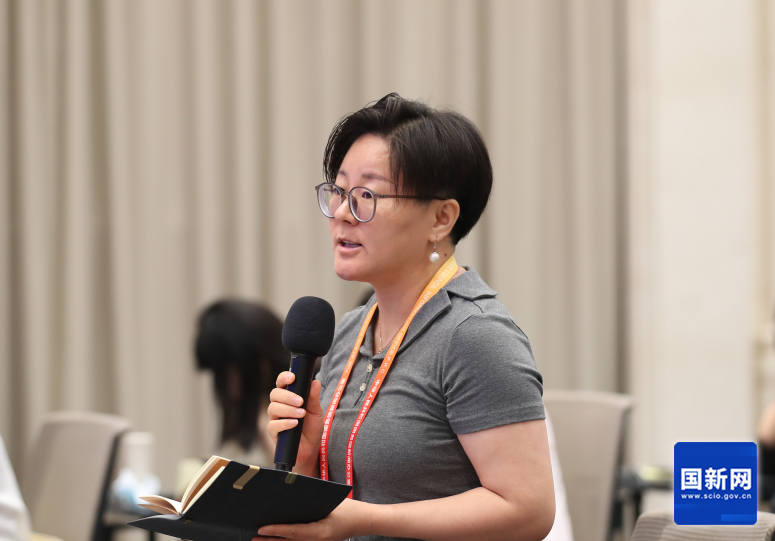
Lightning News Reporter:
How will China achieve harmony between high-quality development of inland waterway transport and the ecological environment? What policies are planned to promote new-energy vessels? Thank you.
Fu Xuyin, Vice Minister:
Thank you for your question. This is closely related to the high-quality development of inland waterway transport, so I'll respond.
As China transitions to a green and low-carbon economy, mainly focusing on energy transformation, the promotion of green and low-carbon vessels has become the defining feature and new direction in shipping development. Currently, inland waterway ships powered by new clean energy sources such as liquefied natural gas (LNG), batteries, methanol, and hydrogen fuel are showing the fact of coexistence, competitive development, and rapid advancement.
By the end of 2024, more than 600 LNG-fueled vessels are in operation in China, mainly for inland waterway transport; 485 battery-powered vessels, mostly inland passenger ships; and a few methanol-powered (4 vessels) and hydrogen fuel cell-powered (2 vessels), all operating on inland waterways.
In total, over 1,000 inland vessels are now using new energy or clean fuels. Overall, China’s development of new energy vessels is keeping pace with international levels, Particularly in electric vessels, where our scale and technological advancement lead the world.
Regarding how to achieve harmonious coexistence between inland waterway transport and the ecological environment, this is indeed very important. Development will inevitably face environmental protection challenges, and inland waterway transport is no exception. Our focus is mainly on three key areas: ships, ports, and waterways.
First, actively develop new energy and clean energy vessels. To put it simply, promote a “power upgrade” for ships by replacing traditional fuel engines to new energy propulsion. Following principles of regional adaptability, scientific planning, and orderly progress, we will gradually increase the proportion of new energy and clean energy applications in newly built inland waterway vessels. Under the current policy of new infrastructure and new urbanization initiatives, there is significant financial support for replacing old inland waterway vessels with new-energy-powered ones. For small and medium-sized vessels and short-to medium-distance routes, we focus on accelerating the application of battery technology, as charging and swapping are more efficient, and encourage the scaled deployment of electric ships with fixed schedules and routes. For medium and large inland ships and long-distance transport scenarios, we actively promote the application of LNG, methanol, and other technologies. We are also exploring hydrogen fuel cell-powered technology. Meanwhile, we will strengthen the construction of supporting infrastructure, such as refueling and charging facilities for new energy ships, improve relevant standards, and implement supportive policies to promote the development of a green shipping industry chain.
Second, build green, low-carbon ports. To illustrate, it’s about encouraging ports to “dress in green.” We will upgrade the green reconstruction and expansion of port terminals, and increase the scale of inland port terminals upgrades. This includes building shore power supplies and oil-gas recovery systems, and promoting dust suppression measures at dry bulk cargo terminals. We will develop near-zero carbon inland ports by encouraging ports to utilize wind and solar energy, promote, the use of new and clean energy for port machinery and inland transportation tools, and prioritize railway and new energy trucks for bulk cargo freight, making the vision of green, low-carbon ports a reality.
Third, beautify the waterways. In other words, work to serve as a good example for building a “Beautiful China” waterway. We will launch a “Beautiful Waterway” initiative, learning from successful experiences like the Zhejiang Changhu Shenxian and Jiangsu Su Lian waterways. Regions with suitable conditions are encouraged to upgrade waterways with aesthetic, ecological, service, and cultural value. The integrated development of waterway transport, tourism, and recreation highlights the scenic beauty of waterways and their surroundings as key attractions for sightseeing and we aim to comprehensively improve navigation environments along waterways. We will also conduct green waterway maintenance by strictly implementing ecological protection and restoration measures, promoting new structures, materials, and techniques—using environmentally friendly materials to reduce water resource pollution. Additionally, we will promote the comprehensive utilization of dredged soil resources, aligning waterway construction with ecological protection. By taking action across ports, ships, and waterways, we aim to make inland waterways into green, beautiful, and people-centered transport arteries, contributing to the construction of a beautiful China. These are some of our thoughts on smart and green development, especially in the context of green growth. Moving forward, we will constantly improve, accumulate experience, and address shortcomings as we promote the implementation of the “1+1+N” policy, in order to advance the high-quality development of inland waterway transport. Thank you.
Shou Xiaoli:
Thank you, Vice Minister Fu Xuyin, thank you all presenters, and thank you to our journalist friends for participating. This concludes today’s press conference. Goodbye everyone!
